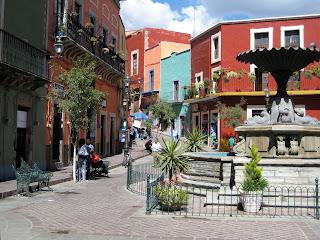 From my first step off the plane in New Delhi, I was besieged with colors, sounds and aromas that are uniquely Indian. I was truly in another world - one where the only traffic rule is to avoid hitting a cow, the odor of raw sewage melds strangely with flowers and incenses, and my backpack held more than most of the people I saw would own in a lifetime. The colors were dazzling, the food outstanding, and the people gracious and kind.
From my first step off the plane in New Delhi, I was besieged with colors, sounds and aromas that are uniquely Indian. I was truly in another world - one where the only traffic rule is to avoid hitting a cow, the odor of raw sewage melds strangely with flowers and incenses, and my backpack held more than most of the people I saw would own in a lifetime. The colors were dazzling, the food outstanding, and the people gracious and kind. My 3-week trip included train travel to Agra (home of the Taj Mahal) and a visit to the holy city of Vrindavan. A religious holiday happened to coincide with my stay, and as a result I was treated to a wonderful experience of song, dance, prayer, and pilgrimages by thousands of Hindu devotees. For three days and nights, the temples were filled with holy men and women. Music sounded from speakers mounted throughout the city, and around the clock the celebrations were heard.
My trip ended in Kolkata (formerly Calcutta) at the eastern end of the sub-contenent. Throughout my entire journey I found the people, whether Hindu, Muslim or Christian, to be proud of their Indian heritage, very welcoming, and with an unassuming kindness toward foreigners and with one another. At no time did I feel threatened, or did I witness aggression, true anger, or violence of any type. I came away with a real appreciation of this unique culture.
SAFETY: Northern India may have a different feel than the rest of the country -- I don't know. As far as personal safety, I was diligent in first obtaining necessary medications and inoculations before my trip. I was also careful to eat only food that I knew was well cooked, deep fried, fresh or clean. I avoided all non-bottled water and most street vendors. As a result, I came back 10 pounds lighter than when I left. Unfortunately, I am unable to give India a safety rating. It is a huge country with many regions - some probably safe and some not so. But I would caution any visitor about the traffic. I literally feared for my life each time I had to travel on public roadways. It was by far the most dangerous factor during my travels. Not sure I would ever find the desire to go back, but it was definitely a journey I'll cherish my entire life.






















